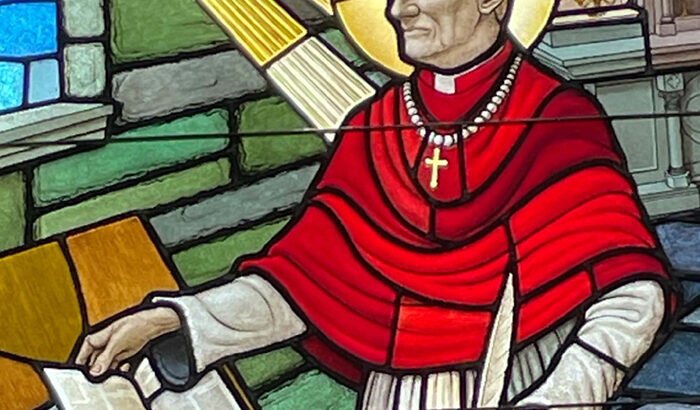My Campaign in Ireland Part II: My Connection with the Catholic University, by John Henry Newman, with an introduction and notes by Paul Shrimpton [Newman Millennium Edition, volume XVII] (Gracewing, £35.00 / €40.00)
For Catholics it may be enough that John Henry Newman is now canonised. But this in a way is a limitation on understanding all aspects of his life.
He has also to be seen as a major figure in the Victorian culture of Britain, a major figure to set beside say Ruskin, Matthew Arnold and others. His Apologia Pro Vita Sua (1864) is an historical document of the first importance.
The time that Newman spent in Ireland is an important passage in his life, but an unhappy one. I suspect it is difficult for a British critic to comprehend the affair fully, for it is closely bound up with Irish ideas about culture and identity that have always thwarted British observers.
Newman was called to Ireland to establish a Catholic University. But the nature of a ‘Catholic University’ was seen from two different aspects by the hierarchy and by Newman. At cross purposes from the start the affair could not but end unhappily.
All his life Newman saw himself as addressing the widest possible audience available to a Catholic scholar in those days. By contrast this book was a confidential document for restricted circulation, which ran contrary to Newman’s nature.
Louvain
For the hierarchy, drawing on the bishops’ own experiences, a Catholic university meant something like Louvain (or Leuven if one prefers). To Newman a Catholic University meant, in its ideal form, something akin to, certainly modelled on, his beloved Medieval pre-Reformation Oxford.
In the end neither got what they hoped for. The hierarchy were wanting an institution to counter the Queens Colleges in Galway, Cork and Belfast. These they saw as standing alongside Trinity College in Dublin.
These were for many in the hierarchy ‘Godless’ colleges, which would have come as a surprise to those who taught in them.
They conceived of a grand edifice in Drumcondra. They even had an idealisation of it painted to give some kind of physical form to their dream.
They saw it as a benefit to the Church rather than a resource for society. They misjudged the movement of public opinion which was towards widespread popular education.
What they got were those connected houses on St Stephen’s Green, where Newman began his work, while living in the house attached to the semi-Byzantine church he had specially erected next to what is now Newman House, ‘No. 86’ to generations of students.
But the college could not grant government recognised degrees. Middle class parents were not going to risk their sons’ professional futures to assist the hierarchy in its plans.
Later the institution he founded as University College Dublin passed into the hands of the Jesuits – who inevitably gave it an overall cast of their own educational philosophy.
It became one of the constituent colleges, along with such places as Blackrock College and Muckross College, which had ‘University level’ section that prepared students for the public exams of the Royal University, established in Earlsfort for Terrace.
This was not the outcome either the hierarchy or Newman had intended. Eventually the Irish Party needed to be placated.
The National University of Ireland was established which consisted of the old royal colleges and of UCD. It was a compromise. It has survived, but in an evolved form
The only two institutions of Newman’s founding that really succeeded were St Cecilia’s medical college, which flourished because it had the remit to grant a recognised qualification.
That certainly attracted students from the middle class parents on whom any university depends. The other was the Catholic University School (now in the hands of the Marist Fathers), which also flourishes in the same neighbourhood in which it was erected by Newman.
Memory
The UCD of today owes little to Newman’s ideas, aside from the piety of memory. Since the move to Belfield it has been modelled on the modern American university, and its staff see themselves in that light.
To an English admirer of Newman the Irish treatment of Newman seems strange, even inexplicable. But the Irish hierarchy of the day were not to know they were dealing with a saint, a man whose fame would far outlive their own. They saw Newman as an Englishman of a kind they did not care for.
It makes for a sad and sorry narrative, from which all parties emerge badly. This book edited from a point of view fails to engage with the miasmic quagmire in which Newman and his sponsors found themselves.
There are lessons to be learned from it. But for the saintly Newman his time in Ireland became (as it later did for Gerard Manley Hopkins) a kind of ‘white martyrdom’.


 Peter Costello
Peter Costello St John Henry Newman as seen today.
St John Henry Newman as seen today. 